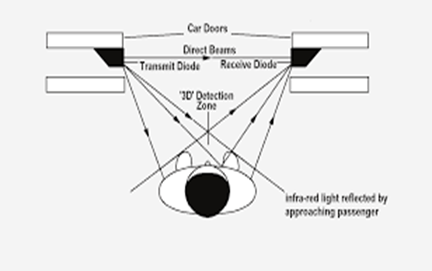Res Ipsa Loquitur and Elevator Doors

Recently the New Jersey Supreme Court issued an important ruling on an elevator case that is likely to impact future cases involving elevator injury claims.
In a unanimous decision, the Supreme Court ruled that, “Res ipsa loquitur is an equitable doctrine that allows, in appropriate circumstances, a permissive inference of negligence to be drawn against a party who exercises exclusive control of an instrumentality that malfunctions and caused injury to another. The rationale for the res ipsa inference is that the injury-causing occurrence ordinarily would not happen in the absence of negligence and that the party controlling the instrumentality is in the best position to explain what went wrong and why.”
The Supreme Court was faced with the question of whether res ipsa loquitur should apply in a case where an elevator door closed on a person exiting an elevator. Finding that res ipsa loquitur did apply, the Court sent the case back for a jury trial on whether an automatic elevator door could only close on a patron if the elevator had been negligently maintained by those who exclusively controlled it.
It is our experience that when elevator door accidents do occur it is frequently because patrons approaching the elevator carelessly stick their arm or other body parts into a closing door. As you may know, standard 2D electronic detectors are affixed only to the interior elevator car doors (and not to the exterior hoistway or hallway doors). Thus, a person who does not reach their hand or body far enough across the elevator’s threshold to activate the interior car doors’ light beam may experience the outer hallway (hoistway) doors closing on them.
Unlike a 2D detector, a 3D electronic sensing edge projects beyond the elevator doors, out into the landing entranceway, and thereby provides protection for passengers approaching and entering the elevator. In short, the 3D system protects against closing hallway and car doors and thus offers maximum passenger protection. Please see the visual representation below.
While no current national standard or state law requires this 3D electronic sensing edge and your elevators can safely and appropriately operate without it, the purchase and installation of this state-of-the-art device may limit possible future incidents and, therefore, reduce potential claims.

In light of this new ruling, Kencor wanted to advise you that the supplemental option of new 3D electronic sensing edges is available for retrofitting. Even though your elevator is not located within the state of New Jersey this ruling has the potential to impact future cases involving elevator injury claims. As an elevator service contractor that neither owns nor controls your elevator, we can only recommend this state-of-the-art equipment be installed. Please note that although your current elevator door re-opening systems comply with all current national, state and local standards and codes, you nonetheless have the option of supplementing your system with the additional features provided by the new 3D electronic sensing edges.
Please feel free to contact us at 1-800-220-4046 or info@kencorelevator.com to learn more.
